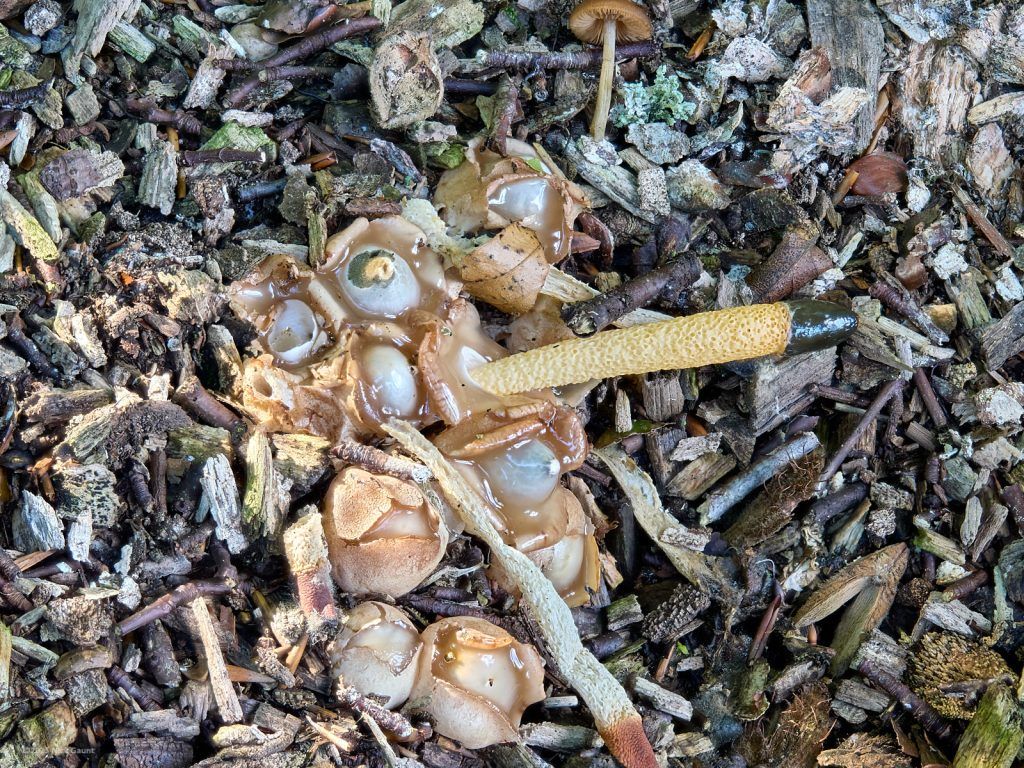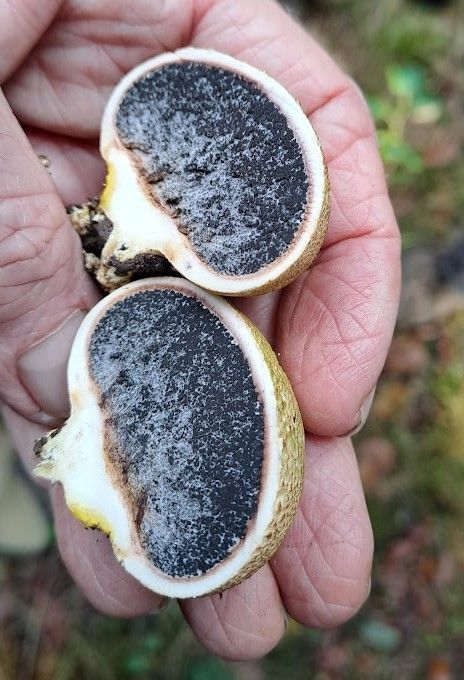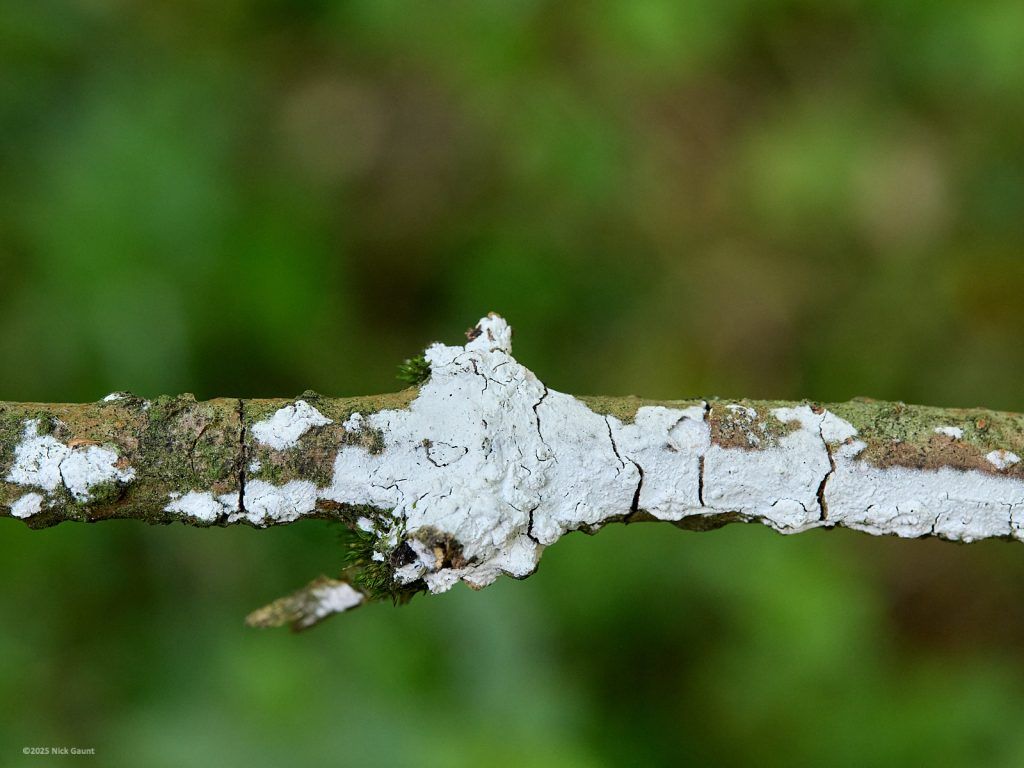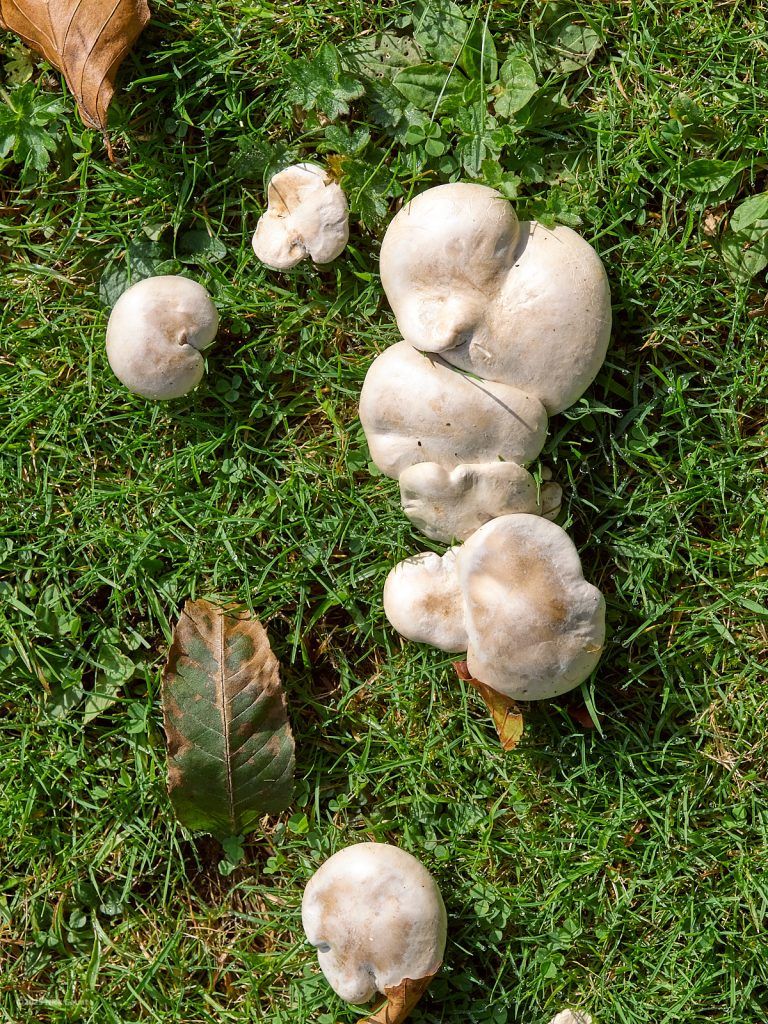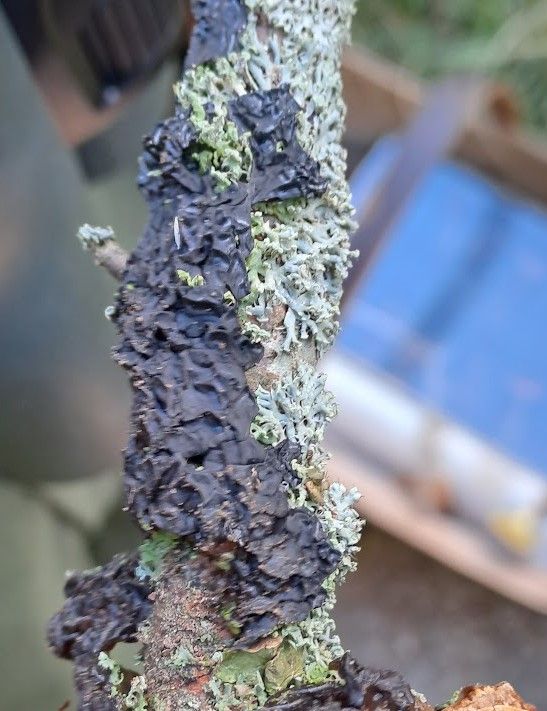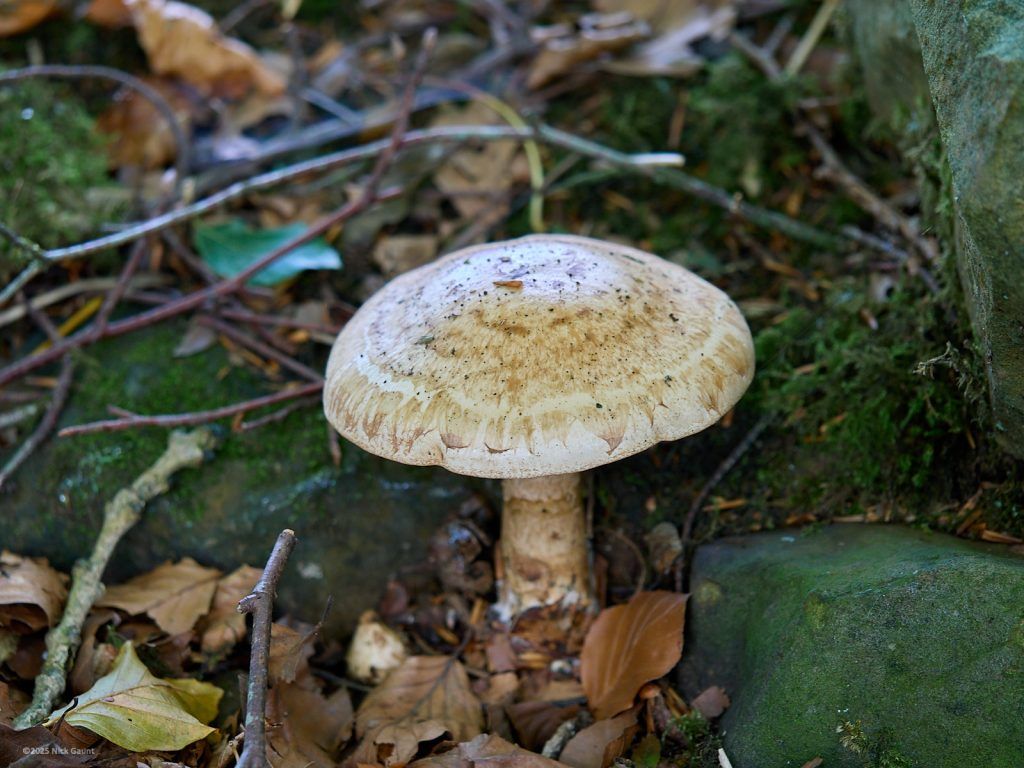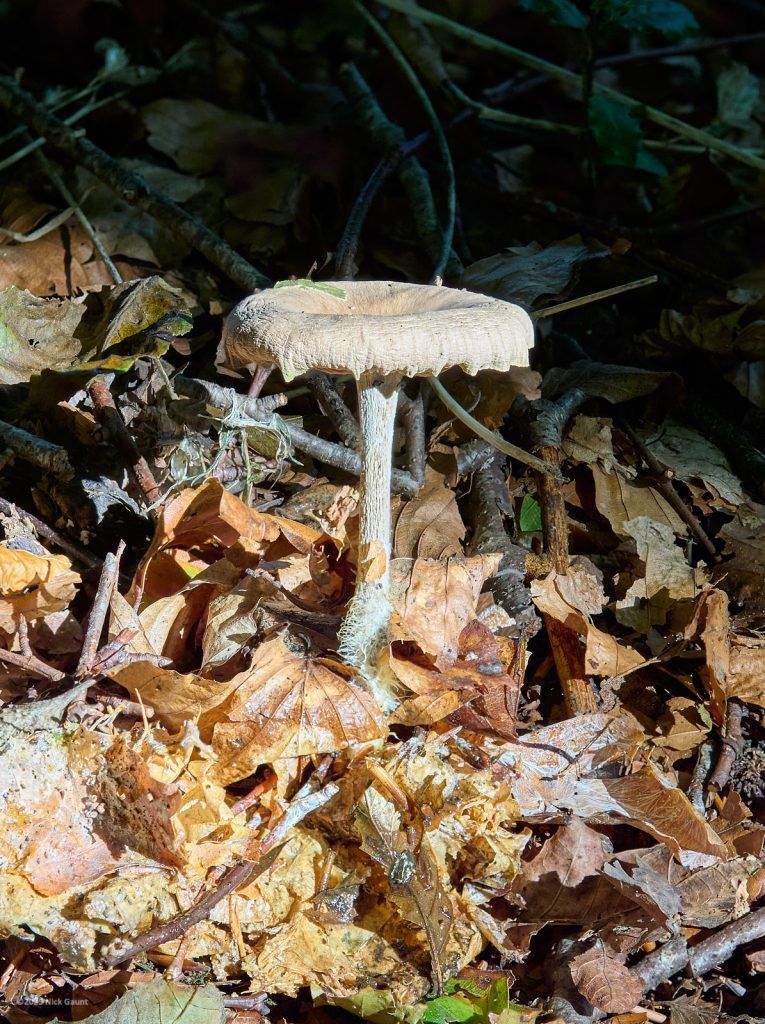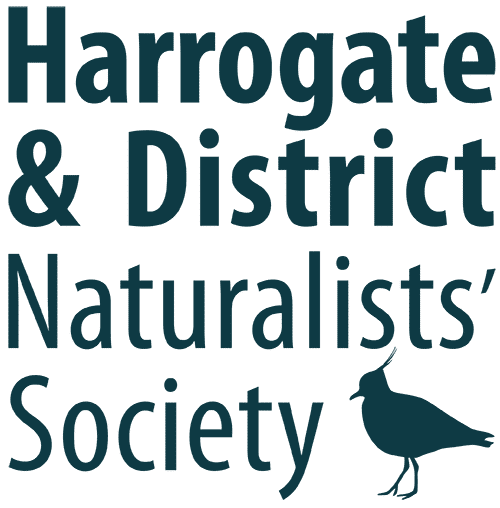It was a perfect bright sunny autumn morning when we met up at Fewston Reservoir car park for our annual Fungus Foray, led by Andy Woodall, with the help of his fellow mycologist Ian Forward. As Andy’s fame has spread far and wide, we had 18 HDNS members raring to go…
It was fairly thrilling getting us all across the A59, including the barriers, but a combination of grey heads and high-vis jackets had a sufficiently calming effect on the traffic. We entered the wood where David obliged by immediately tripping over a bramble into a Jelly Ear fungus which became our first find. Andy described how they can be dried and revived, or soaked in orange juice to make a tasty sweet. We all fingered its curious rubbery texture and did not rush to fill our pockets….
We then continued to find species in quick succession, only the highlights will be mentioned here, a full list, with scientific names, is attached below. Andy is particularly good at explaining how names are derived, and how they can help you to remember the identification. Many are particularly descriptive and picturesque – Poisonpie, Plums and Custard (the colour scheme, not the flavour), Rosy Bonnets, Brittlestem and Toughshanks, Warlocks Butter, not forgetting Fairies’ Trampoline – there is much old lore surrounding this fascinating group and many English names reflect ancient superstitions. We were also urged to smell, and sometimes taste specimens, the distinctive smells available included radish, aniseed, raw potato, chocolate, marzipan and bedbug (if any of us were familiar with this latter, we kept quiet!) A good example was the Miller, an attractive all-white cap fungus which smelled strongly of raw flour. These fungi were forming a fairy ring on the local cricket pitch, where we also found a minute Orange Moss-cap which is actually parasitic on mosses, and a few magic mushrooms, tiny with a distinctive pointed papilla on the cap; apparently it is illegal to even pick them as they are a Class A drug! Hopefully no CCTV on the cricket pitch… There was also a digression into plant galls, although the examples we found, here on acorns, were not caused by fungi. Many of us had seen Knopper Galls before but the interesting Artichoke Gall was fascinating – just like a mini artichoke.
There were plenty more finds as we proceeded upstream, in particular a pile of old wood chippings which on close inspection was seen to be covered in the fruiting bodies of the Dog Stinkhorn. This fascinating fungus, a smaller relative of the bigger Stinkhorn, is in fact a hollow tube resembling polystyrene, which can elongate remarkably rapidly by the uptake of water. Their colour so closely resembled the chippings on which they were growing that none of us would have spotted them; luckily David had researched the area previously.
It was very beautiful on the wooded path beside the sunlit, fast-flowing River Washburn. We reached a clearing with logs for seating for our lunch, and afterwards moved up onto the ridge formed by the old mill leat, which fed the millpond for the 19thC flax mill. There is much interesting industrial archaeology in this area. The dry channel of the leat yielded more finds and on the bank above there was a wonderful display of large Penny Bun fungi; these boletes, also known as ‘Ceps’, are a delicacy. Other attractive Boletes were also found including the striking Scarletina. Many of them turn blue on bruising, sometimes almost instantly. Amongst the beeches up here were more fungi specific to tree species, and a number of different Brackets. And, not to ignore smaller species, Andy pointed out various Rusts, such as the Coltsfoot Rust, also mentioning that a new rust introduced for the biological control of Himalayan Balsam was proving successful.
It was growing late and we reluctantly make the return trip to our dash-with-death across the A59. Some people are better at getting over barriers than others,,,
Many thanks to Andy and Ian for a wonderfully productive foray. We had all been treated to one of the richest possible wildlife experiences, and learnt so much!
Muff





